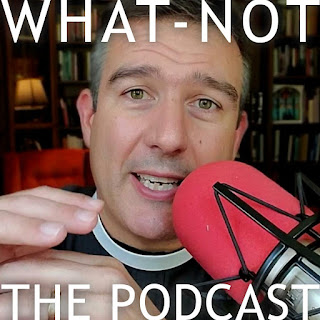The Liturgy shapes the Conscience to be like Heaven
The liturgy shapes the conscience to be like heaven | Listen Notes
This was a particularly fantastic episode that took me a few listens and notes to unpack. I wanted to put those notes together for a broader audience, particularly to emphasize the connection of the heavenly council to the liturgy which then impresses our consciences week in and week out. Rev. Weedon has noted in his Revelation studies that novelty for the liturgy is from the future, that is our life in heaven. But it's also for now, as Rev. Wolfmueller shares.
The Heavenly Council
- Isaiah, Ezekiel, Daniel, Revelation gives us glimpses into the heavenly throne room
- There are five aspects of the heavenly council
- Conversation: Jesus' baptism; Ps 22
- Court: Job; Revelations 12; Heb 4, 5, 7;
- Petitioning: Images of prayers and incense
- Worship: Four creatures
- Sending: Angels, prophets
The Conscience
Our conscience is a little courtroom, a little judgement seat, that can go wrong in many ways
- Instead of accepting the good judgement of our own conscience, we accuse others
- We try to make the case for our own goodness in the courtroom of our conscience
- We replace the 10 commandments (righteousness before god) with our own standard (for example Environmentalism is righteousness by carbon footprint)
The Liturgy
Thesis: Christian worship exists to imprint the shape of the heavenly council on our own conscience.
- In the Old Testament, Moses was given instruction for worship, construction of temple, etc. "make a copy of what you see" - that is, earthly worship is a shadow of the heavenly reality (Hebrews 10).
- Tabernacle made with hands is a reflection of a tabernacle not made with hands
- Holy of Holies is a reflection of the throne room in heaven
- Mercy seat is a shadow of the heavenly throne
- Day of Atonement is a shadow of Jesus' crucifixion, resurrection, and ascension
- Paraclete (1 John 3)
- Holy Spirit speaks what is known in heaven on earth in the Bible
- We declare ourselves guilty in the confession in church and that goes to the heavenly courtroom
- We receive absolution from the heavenly courtroom through the declaration by the pastor
- We hear the conversation of the heavenly throne room in the scriptures
- We confess it in the Creed
- We expound on it in the sermon
- We offer our praises in response
- The same blood Jesus carries to heaven, Jesus provides on the altar
- We partake in the evidence of the heavenly court. We eat the same body and blood offered up on Calvary. It is brought into us

Comments
Post a Comment